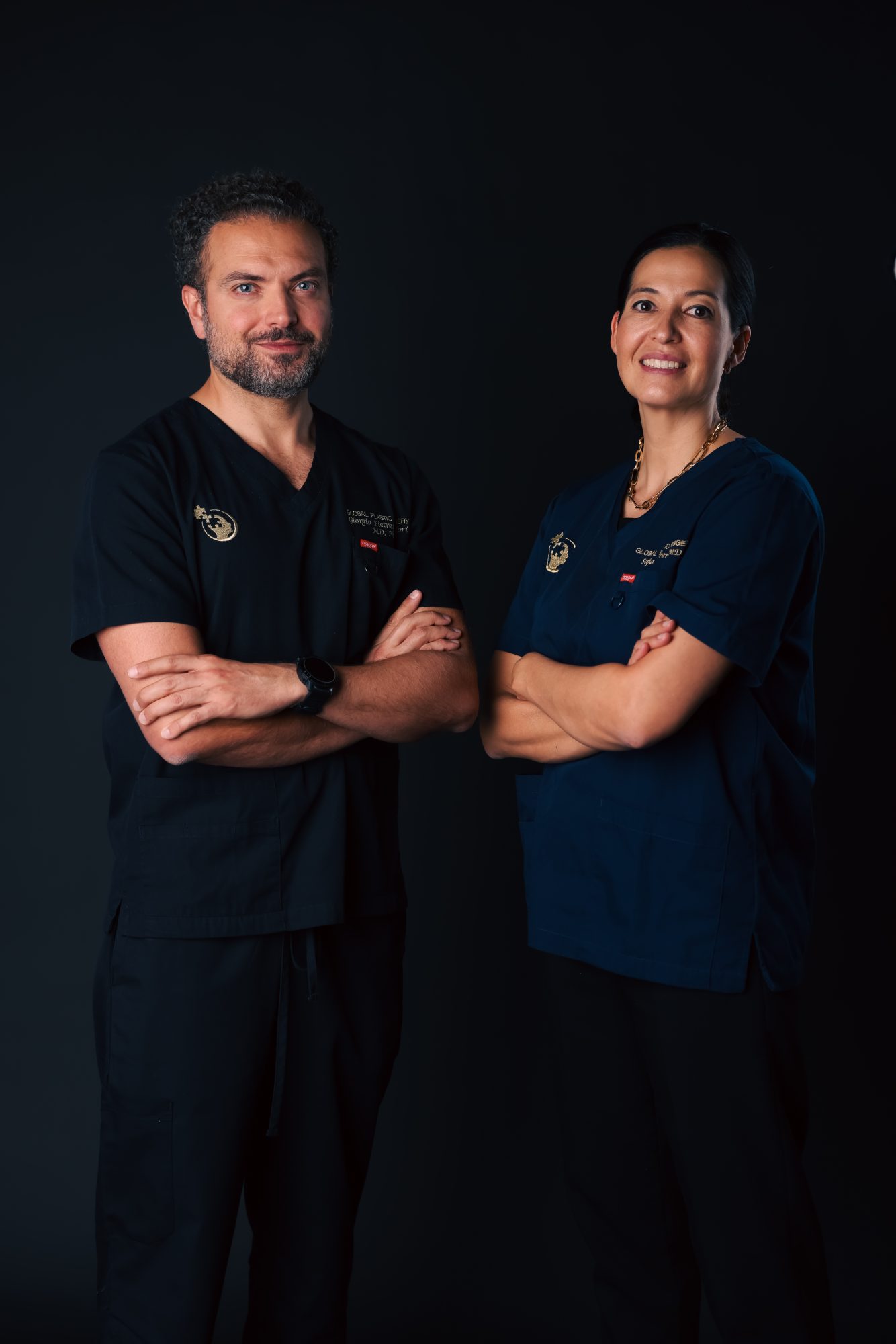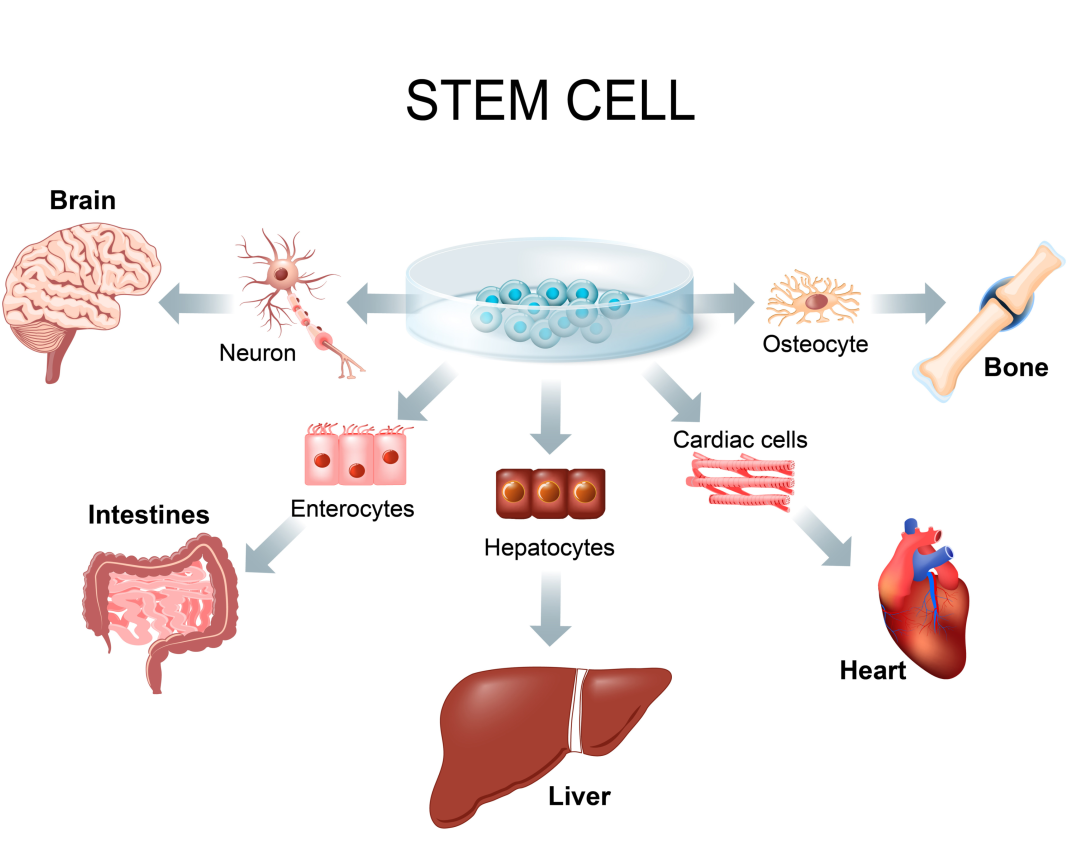Adipose tissue, commonly known as fat, has long been considered a mere energy reservoir. However, recent discoveries have revolutionized our understanding of this tissue, placing it at the heart of advances in stem cells and regenerative medicine
To shed light on these questions, we will rely on the expertise of Doctors Saja Scherer and Giorgio Pietramaggiori from the Global Medical Institute clinic in Lausanne. These two eminent specialists are at the forefront of research and clinical applications of adipose tissue in regenerative medicine.
Dr. Saja Scherer, a renowned plastic surgeon, is recognized for her innovative work on the use of adipose tissue in facial reconstruction and rejuvenation. Her research has contributed to improving fat grafting techniques, thus optimizing results for patients.
Dr. Giorgio Pietramaggiori, for his part, is an expert in regenerative medicine and tissue engineering. His pioneering work on the use of stem cells derived from adipose tissue has opened up new therapeutic avenues for the treatment of various pathologies, particularly in the field of pain management, migraines and tissue regeneration.
Together, at the Global Medical Institute clinic in Lausanne, they combine their expertise to offer cutting-edge treatments and push the boundaries of adipose tissue-based regenerative medicine.

What is subcutaneous adipose tissue?
Subcutaneous adipose tissue is a layer of fat located just beneath the skin, distinct from visceral fat that surrounds internal organs. Its main roles are thermoregulation, shock protection, and energy storage. However, what makes this tissue particularly interesting for regenerative medicine is its richness in stem cells.
Indeed, adipose tissue contains the largest reserve of mesenchymal stem cells in the body, surpassing even blood and bone marrow. These cells, called ADSCs (Adipose-Derived Stem Cells), have characteristics similar to bone marrow stem cells, but with superior angiogenic potential.
The adipose tissue also contains the “stromal vascular fraction,” a mixture of stem cells, other cell types and growth factors with remarkable regenerative properties. This fraction plays a crucial role in the therapeutic effects observed when using adipose tissue in regenerative medicine.
How is adipose tissue extracted?
Adipose tissue extraction is generally done through mini-liposuction, a minimally invasive procedure performed under local or light general anesthesia (or IV sedation). This technique allows for easy extraction of adipose tissue, which is a major advantage compared to other sources of stem cells.
A minimal processing (filtering) makes the adipose tissue immediately usable for various therapeutic applications while preserving the viability of the stem cells it contains In Switzerland, in specific cases, cells can be sent to a laboratory for storage for up to 30 years and re-used on demand when needed without extraction surgery.
Applications in regenerative medicine
The applications of adipose tissue in regenerative medicine are numerous and promising. Dr. Giorgio Pietramaggiori, an expert in regenerative medicine at the Global Medical Institute clinic in Lausanne, emphasizes: “The therapeutic potential of adipose tissue is truly remarkable. We are observing promising results in the treatment of various pathologies, ranging from chronic migraines to complex tissue injuries.”
- a) Correction of scars and pain syndromes:
- A patient who had undergone knee prosthesis surgery suffered from persistent pain due to scar tissue adhering to nerve fibers. A simple injection of adipose tissue around the knee significantly relieved her pain. This application illustrates the potential of adipose tissue to improve the quality of surrounding tissues and reduce painful adhesions.
- b) Treatment of radiotherapy sequelae:
- A patient who had undergone facial cancer removal followed by radiotherapy presented with asymmetry and painful adhesions. A few injections of adipose tissue harmonized his face and considerably reduced the pain. This use demonstrates the ability of adipose tissue to regenerate tissues damaged by radiotherapy, thus opening new perspectives for oncology patients.
- c) Migraine relief:
- A patient operated on for a meningioma developed occipital neuralgia. The use of adipose tissue reduced the mechanical irritation of the occipital nerve, thus alleviating the neuralgia. This application highlights the potential of adipose tissue in the treatment of neurological disorders.
Uses in aesthetic surgery
Beyond its applications in regenerative medicine, adipose tissue also finds numerous uses in aesthetic surgery. Dr. Saja Scherer, a renowned plastic surgeon, explains: “The use of autologous adipose tissue in aesthetic surgery offers natural and lasting results. It’s a true revolution in our approach to facial rejuvenation and breast reconstruction.” However, proper patient selection is necessary, and procedures and excesses that can cause risks to patients should be avoided.
- a) Natural alternative to fillers:
- Adipose tissue offers a natural and durable alternative to hyaluronic acid injections. More and more patients are opting for autologous fat transfer to obtain a more natural and harmonious result that is also long-lasting (as adipose tissue cells remain for life).
- b) Facial rejuvenation:
- Adipose tissue grafting not only restores facial volume but also improves skin quality, giving it a younger and healthier appearance.
- c) Breast augmentation:
- Breast lipofilling offers a natural solution for breast augmentation or reconstruction, with the additional advantage of improving the quality of surrounding tissues.
- d) Body contouring:
- Autologous fat transfer allows for reshaping various areas of the body, offering natural and lasting results.
Innovations and future perspectives
These experts continue to explore new frontiers. “Our current research focuses on optimizing cell survival and improving graft take,” explains Dr. Pietramaggiori.
The innovative approach of the Global Medical Institute clinic, combining Dr. Scherer’s expertise in plastic surgery and Dr. Pietramaggiori’s in-depth knowledge of regenerative medicine, paves the way for increasingly effective and personalized treatments. Their work demonstrates that we are only at the beginning of exploring the possibilities offered by adipose tissue.

This work is licensed under Creative Commons Attribution-NonCommercial-NoDerivatives 4.0 International.


